Holiday…. Celebrate
So far this season we have been away in the wilderness for one hundred days and back in port for seventy, we’ve had rain or liquid sunshine on about a hundred of those days.
Holiday…. Celebrate, If we took a holiday, took some time to celebrate..

Madonna’s words seemed to drift through our thoughts as Banyandah slid out of Mill Bay and into the wider Macquarie Harbour, while around us under a sky so clear and blue, sharp-edged mountains reflecting off the liquid sheen of still waters kept all four of us spellbound.
With us on board Banyandah were special friends; Doreen with whom Jude did her nurses training in northern England many years ago, and her husband Mel. They’d come to Australia to attend the Commonwealth Games and thought it’d be great to pay us a visit here in Tasmania afterwards. When we warned that it had been a cold and wet summer, Doreen replied, “Not a worry, it was only 2°C when we left home!”
Holiday… Take some time to celebrate,
What a great idea! Especially as Jude and I had been battling through the thick stuff of Tasmania’s forests in all sorts of bad weather for what seemed forever. Fine food in beautiful settings with friends was just the ticket, and so we went the whole nine yards. Picking them up at Hobart’s airport and then staying with good friends on Mt Wellington, we enjoyed a few fabulous days exploring Hobart, before tackling the five hour run across the mountains to the west coast and Banyandah.

Betsys Bay showing short jaunt to West Coast
Trevor Norton’s- Macquarie Harbour chart
Our plans to visit all the highlights of this magnificent waterway began in Betsys Bay, where on that first day, we hit the trail to see the vast Southern Ocean. Here’s what our guests wrote in the logbook – After all was packed away, started engine and sailed to Betsys Bay, then walked half way to the west coast. Got some great views of the ocean with some huge waves breaking over Sloop Rocks. Saw seals in the harbour and a praying mantis laying eggs on the button grass heath, and a wombat!
Our biggest surprise was not that our friends could handle the rough track, but that we happened upon a Hairy Wombat looking for a snack. Maybe he was leaving behind some square poo to mark his territory and thought we’d not see him as he stood absolutely still. That let us walk almost right up to him clicking cameras.
Next day, off we went across the harbour to Farm Cove with Mel critical of the intense fish farming going on here. No one would blame him for being alarmed by so many fish farm cages down the centre of the harbour, all busy with noisy workboats. Sort of spoils the majestic scenery.
From Farm Cove we took a short walk across the narrows to the harbour side in rather windy threatening conditions, and then had to escape. Back inside cosy Banyandah our guests cooked a sumptuous meal of Atlantic trout with a variety of fresh veggies and baked potatoes with sour cream and chives as an added treat.
 Weak morning light revealed ugly conditions that completely hid 1144 m high Mount Sorell. But it was simply bliss slipping through the mist in unbroken silence around the corner and into Kelly Basin. Once there, under evil clouds, our plan said we would tackle one of Tasmania’s sixty great short walks, the Bird River Track. According to the Bureau of Meteorology, it rains an average of 164 days a year here. Oh my! It was a wet experience. No doubts about it. Drizzle all day, big puddles on the track, with lots of predators alerted to a passing feed.
Weak morning light revealed ugly conditions that completely hid 1144 m high Mount Sorell. But it was simply bliss slipping through the mist in unbroken silence around the corner and into Kelly Basin. Once there, under evil clouds, our plan said we would tackle one of Tasmania’s sixty great short walks, the Bird River Track. According to the Bureau of Meteorology, it rains an average of 164 days a year here. Oh my! It was a wet experience. No doubts about it. Drizzle all day, big puddles on the track, with lots of predators alerted to a passing feed.
Don’t misunderstand we had a grand day out. Rainforests are best when wet! And the Bird River was flowing mightily. It’s just that getting soaked, lead to being cold. And, those tiny blood sucking predators found our English friends’ peaches and cream skin to their liking. Upon doing a check when we got back, fresh blood was discovered running from Mel’s ear and neck, and we reckoned he’d fed them enough to last a year.
As a result, both of them swore they’d never enter the forest again! Until we mentioned that it was that or sit on the boat and read. They felt a bit better after we got them up to speed on the need to routinely examine their feet and trousers to stop those buggers from creating bleeders. Guess we should have mentioned leeches before doing the walk, but we’d never encountered them there before.
Next, from Kelly Basin direct to the Gordon River in the Tasmanian Wilderness World Heritage Area, where towering mountains squeezed us into a watery highway. The bad weather had passed, leaving us surrounded by exquisite scenery down to the water’s edge as Banyandah travelled the five miles to Heritage Landing. That’s where the tour boats take visitors for their close up view of South West Tasmanian Rainforest. First constructed in 1989 to restrict tour boats to the lower Gordon, in order to reduce riverbank erosion, the Heritage Landing walking platform was recently widened and improved with plastic nonslip grating and informative signage. Sans leeches, it was a special treat for our guests. Their visit was all the nicer by being alongside the landing with our good friend Rob on Songlines, who had his brother and wife on board. Nice that. A mini-party alone in the starry wilderness just sort of happened.
Leaving next morning before the first ferry arrived, long periods of awestruck silence were punctuated by the occasional soft “wow” as we admired what is regarded as one of the best temperate rainforests remaining in the world. Most of the trees are myrtle beech, which can grow up to 50 metres tall spanning a 500-year life. The lighter green foliage of celery top pine shoot out of the canopy here and there. Earlier in the summer the white flowers of leatherwood trees, from which delicious honey of the same name is produced, decorates entire hillsides.
In quick stops, we explored the Eagle Creek campsite and the trail up to the log bridge crossing the creek, where, surrounded by a green world of mosses and lichen, both our guests were taking a few steps forward then looking down. Back on board, only Doreen had attracted one tiny bloodsucker that we dug out intertwined in her sock.
As the light softened to dusk, we found a beautiful reach of the river and simply planted our hook, to become one with the towering forest and calls of Nature. Wow, that proved so relaxing we dallied away the following morning trading stories of home, family and friends.
Before setting off, we couldn’t help but row them ashore one more time to see the remains of a bed, all that’s left after more than half a century from when Mrs Shirley White insisted on accompanying her husband Frank harvesting exotic trees. She’d just given birth to a little girl, so they were two of the first females to brave the harsh and dangerous wilderness before modern communications.
Here’s what Shirley White once wrote, “I used to wear shorts when the weather was nice, and this day I went down to the river to get water, and on the way back I saw my legs were covered in leeches and I screamed. All the men come running out the bush to see what the matter was. They wondered what I was upset about. They didn’t think leeches were anything to worry about.”
Weaving our way around a wide bend then through the narrow gap by Butler’s Island, an impressive rock shard jutting up midstream, we came upon a wide waterway that ended in a narrow gorge. In 1979 the Hydro-Electric Commission (HEC) proposed the construction of a 180 megawatt dam in that gorge, which would have resulted in the inundation of 23 miles (37 km) of the middle reaches of the Gordon River and 21 miles (33 km) of the Franklin River valley. And just before that narrow gorge could be seen the decaying wharf of Warner’s Landing that had once been used to unload earth moving equipment for the proposed Gordon below Franklin Dam, which was axed in the 80s when this area became World Heritage. Across from it stands a picturesque sandy beach backed by lush rainforest, and through the foliage could be seen a scant vision of a hut. Built in the 70s for Hydro workers, today it’s primarily used by rafters at the end of their Franklin River Adventures. Those rafters face their greatest danger there as a couple of tiger snakes live at the back of the hut. They’re highly venomous, but tend to leave you alone if you don’t bother them. Aside from that, there’s also a colony of jack jumper ants and they’re more a concern than the snakes. Wikipedia says that “jack jumper ants cause more deaths in Tasmania than spiders, snakes, wasps, and sharks combined.” The reason for this is that a nip from them can cause anaphylactic shock. They are quite territorial and aggressive as well. Get too close and they will start jumping towards you.
Skirting the shale bed that obstructs the middle ground and going beyond the landing and hut, a new jetty took shape. That one, with its associated floating platform occasionally used by seaplanes, is very familiar to us because Banyandah has spent many weeks alongside it on several occasions these last few years. It’s been our base when finding and tagging the historical Goulds track that begins just a stone’s throw away. From this jetty, along another of those easy walkways, the striking 30 metre high Sir John Falls bellows with all its might. Many believe these falls were named after Sir John Franklin, Lieutenant-Governor of Van Diemen’s Land from 1837 to 1843 but this is untrue. The falls were named by the photographer Stephen Spurling in the early 1900s after Sir John Dodds, Chief Justice, 1887-1898.
This was our ultimate destination. Alongside with easy access to tracks through some of the best World Heritage forests, we had majestic views all to ourselves. Aye, late in the season, commercial traffic had ceased, so the place was totally ours to enjoy. And enjoy it we did right from the get-go.
Having had plenty of rain made viewing the falls very impressive. Leaning over to Doreen with a mischievous twinkle, I whispered, “On your birthday, I’ll take you for a row under them.” Her birthday being the day after the next, her eyes lit up then shot a glance at the torrent issuing from the cliff before beaming, “I’d love to do that.”
Sir John Falls sends the cold mountain waters of Cataract Creek rushing around our ship, which is both good and bad. Bad because after dark we had to use our boat heater which sounds like a Saturn rocket blasting off. But good because the fattest, oiliest, and tastiest of eels live just where the creek exits the falls. I’ve always had good fortune when fishing there, and our guests were not disappointed. Yum, two eels on the barbie that night brought heavenly delight.
Next day being sunny we promised Mel and Doreen that we’d walk the historical track which Jack and Jude had been working on these last four years. Dressed in long pants with double socks up and over the pants then turned down, Doreen declared herself ready for the adventure, so off we went. Loading up four souls into Little Red, I rowed our merry band the hundred metres close beside the overhanging trees to where a few bits of iron protrude out the stream. These belong to the long defunct Goulds Landing, which from 1862 was the departure and landing point for geologists, miners and just about anyone wanting to reach Tasmania’s West Coast. Last used in 1983, it is now bits of memories wasting away.
My! What a treat it was to show off our work to friends. After landing, we climbed the steep incline to the forestry house, or what remains of it. There they could visualize the staging area after seeing the winch and haulage track and carriage used so long ago. Then we showed them the start of the Shoe Road. That’s the deep furrow gouged into the earth by Huon Piners hauling logs out of the surrounding forests. Walking up it they saw the forests through which the logs were hauled – where every imaginable shape of tree and fern, plus many mosses, fungi, and mushrooms were growing.
We spent the greater part of the day wandering through those forests that had remained hidden for decades. There was so much to see and chat about. Dotted along our way were beautiful baby Huon Pines with their distinctive drooping needles, growing out the ground where once horses dragged logs. Huon’s are the slowest growing tree in the world, adding just a millimetre of diameter in a year.
Of course there were giant myrtles that have the tiniest leaf and which are related to the ones from Gondwanaland. Plus tall stately blackwood trees surrounded by cushions of the softest verdant moss. It was a wonderful treat for Jude and I to witness the fruits of our labour still clear and available for all to use. We reached the farthest reaches of the wet forest, where twin Huon stumps mark the change to different soils and the Manuka forest takes over. These slender trees grow quite close together, and they must exude something that keeps other plants from growing under them because between their trunks of shedding paper bark we could see far through the trees.
Next day, we used our outboard on Little Red to take our friends up the gorge a couple of miles to where rocks block the way for vessels bigger than tinnies. Big Eddy, as it’s known, wasn’t placid like it had been on past occasions. There were overfalls and whirlpools this time, which with all the weight we had on board made steering Little Red a bit skittish. So I turned about, deciding to play it safe, rather than have a drama on an otherwise perfect day.
But who would complain when steep sided forested bluffs towered both sides and wildlife is flying overhead or peeking out from the drooping foliage with no one within cooee. Now that’s a rare treat in today’s world.
With Mel and Doreen’s time coming to an end, we returned downstream to Heritage Landing for another dose of that magical walkway through some of Nature’s finest trees and foliage. This time we had it to ourselves and enjoyed the final moments of what will always be a great memory. Next morning at eleven, the tourist vessel Lady Jane Franklin tooted her horn as she rounded the last bend, signalling the end of a memorable visit. Then taking our friends over to board her, we introduced them to Captain Peter, and sadly, like all dreams, our grand holiday with our friends ended when the Lady Jane tooted us and departed.
Stage two of Jack and Jude’s time down harbour began after wiping sadness from our eyes as we chased the tour boat down to the river mouth where we parted company. She set a course to Sarah Island for a tour of the historical penal colony, while we went directly to our little hidey-hole in Farm Cove, to settle in for another week or two of writing. We have a book to finish. Better said, we had the first draft to complete of Around the World in Ever Increasing Circles – one family’s voyage of discovery. Hopefully it will be in bookstores for Christmas.
Until next time, fair winds and safe anchorages to all, with the added hope that your connection to Earth grows even greater.









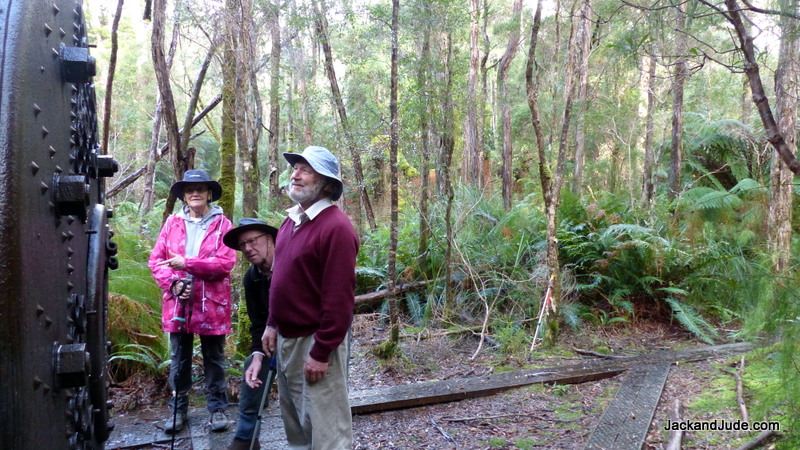










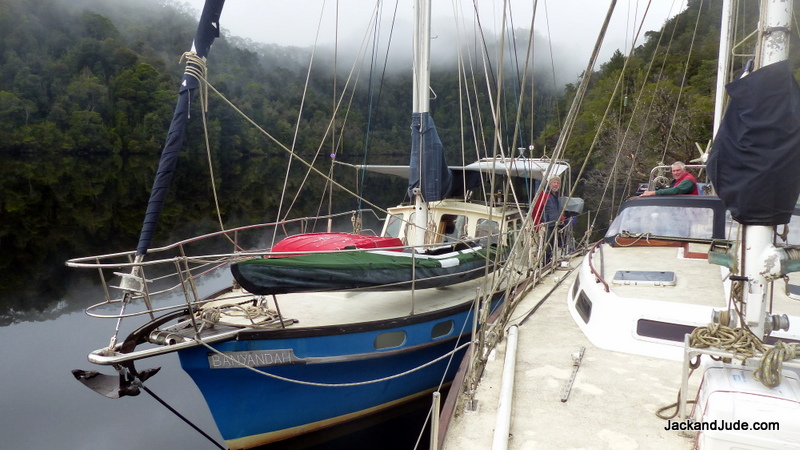







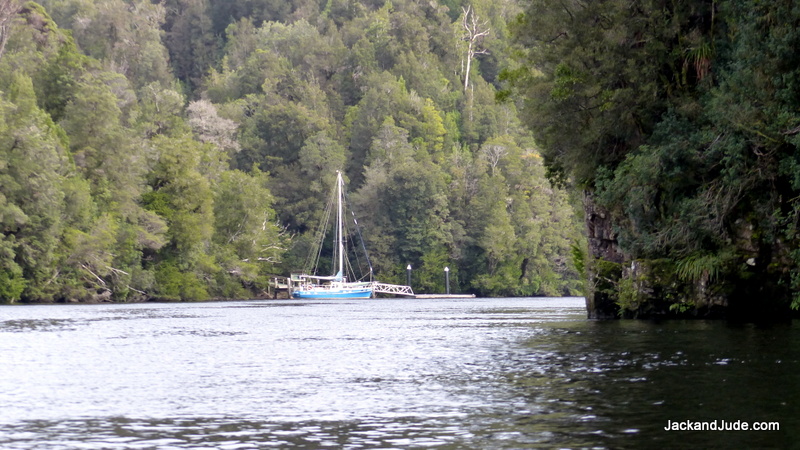

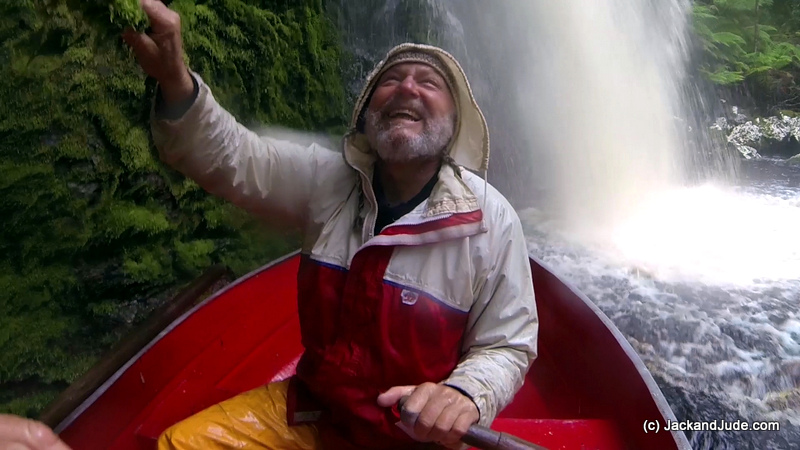




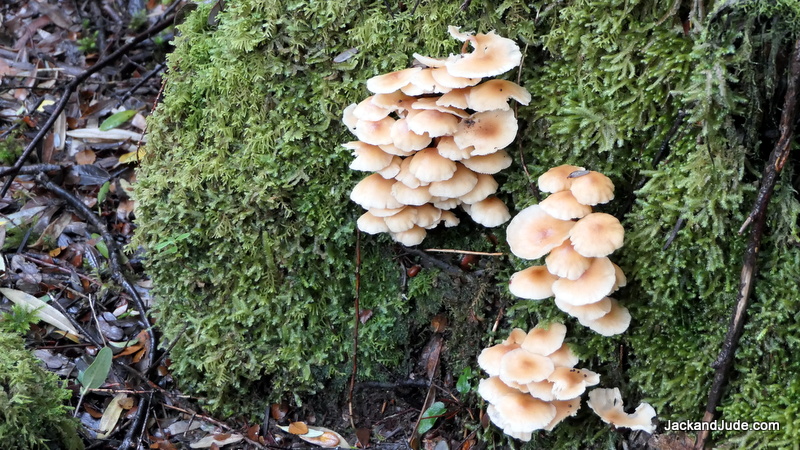









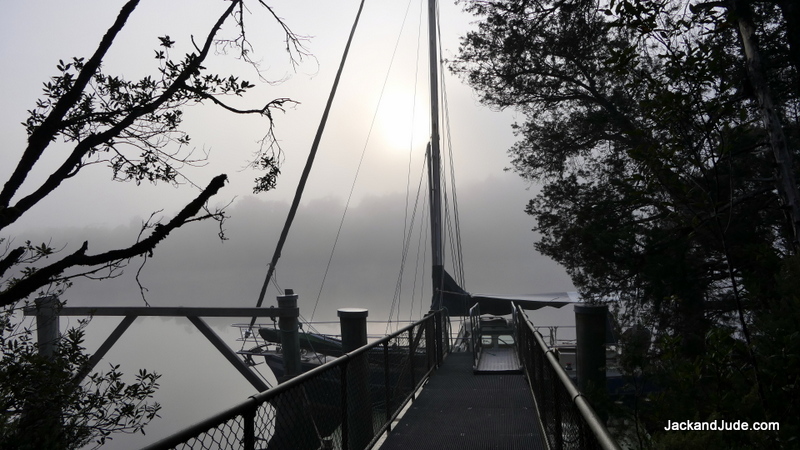




Hi Jack and Jude,
I always love reading your blogs and grand adventures. So happy to see your information on Zulu Waterways because we use it in SA! Glad you have joined forces. Look forward to reading more of your adventures soon!
Kate
Hi Kate,
We’re delighted to be partnered with Zulu, isn’t it great to have a collection point for cruisers’ input !